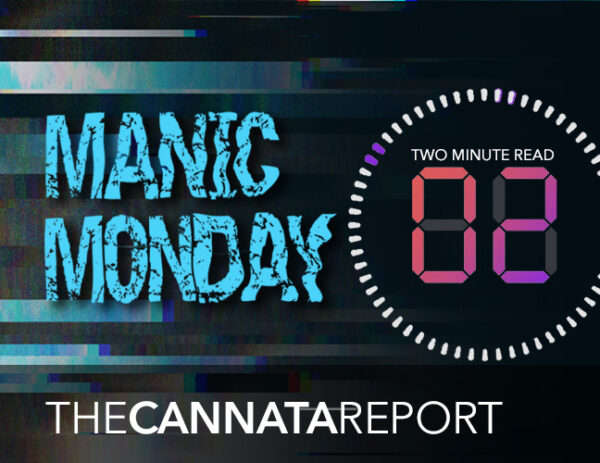Don’t miss these signs.
Acquisitions have been an integral aspect of the fabric of the dealer channel for more than 30 years, going back to the days of Alco Standard and Danka. And they will likely be a part of the dealer channel going forward until there are no more suitable acquisition targets available, but we believe that day is a long way off.
“Throughout the prior 30 years, there has always been a substantial amount of merger and acquisition (M&A) activity, with only two relatively short lulls—the market crash of 2008 and the COVID-19 epidemic in 2000,” noted Michael H. Dudek, Esquire, CPA, of Zygoquest Group, an organization that assists dealers in the acquisition process. “These two lulls primarily occurred because revenue declined; thus owners did not believe they could derive fair value upon sale.”
Dudek expects M&A activity in the industry to continue to be strong going forward. “There are many office equipment transactions occurring and many IT managed services transactions occurring. There was more activity in 2021 than in 2020, particularly during the second half of 2021, and I expect that momentum to continue. There have been significant changes in the identity of the acquirers in the last five to 10 years. Although some are still somewhat active, manufacturers are not as active as before in acquiring office equipment dealers. However, there are many large independent dealers acquiring, along with a good number of private-equity-backed acquirers, with both being interested in office equipment dealers and IT MSPs. Plus, the cost of investment capital remains low, which stimulates activity and results in favorable ROI for acquirers.”
We reached out to industry experts like Dudek and asked them to finish the iconic phrase popularized by MAD Magazine (think “You know you’re a Star Wars geek when…”) to answer the question, you know it’s time to sell your dealership when…
You’re 55 or older and don’t have a succession plan or a second or third generation interested or capable of running the company.
“If you don’t have a succession plan, if you don’t have people that are ready to take on what you do on a daily basis, you’ve got a problem real soon coming at you,” said Jim Morrissey, president of UBEO Business Services.
That doesn’t mean that dealers with a succession plan are off-limits to those looking to acquire. According to David Ramos, chief strategy officer at Visual Edge IT, his company will still engage with them anyway. “If I’m someone who is smart enough to have an iron-clad succession plan in place, I’m somebody who thinks of options regardless.” Ramos explained that he wants these dealers to know that Visual Edge is an option should things change. “One of our talking points is risk mitigation. Think about perspective today versus two years ago. Do you want to go through a pandemic by yourself or with a team that can help you through it?”
It’s a challenge growing the business.
Six years ago, ProCopy was sold to Flex Technology Group (FTG). This was a strategic decision based on various factors, including the desire to grow and compete against larger dealers on a more even playing field. “We were in that tweener stage. We were too big to be little and too little to be big,” explained Mike McGuirk, the former president of ProCopy, a Flex Technology Group company, who retired on April 1, 2022. “We couldn’t compete with the POAs or DEXs anymore, and we sold the same product. We were going to lose most of those price battles because the price difference was as much as 12% to 15%, and that gap was going to get bigger over the next 10 years.”
After being acquired by FTG, ProCopy achieved its goal of being more competitive with the larger dealers. “We made the strategic decision of being part of a big organization and we received benefits from that,” said McGuirk. “We went from $3 million to $18 million in a seven-and-a-half-year period. And we now have the same buying power with Canon. It allows us to win some of those super competitive deals or at least play in them.”
Since selling to FTG, ProCopy’s bottom line has gone up, and it has diversified into areas such as production print, where they now have the resources to hire a production print specialist. Because ProCopy was able to centralize roles such as HR, accounting, and administration, costs were reduced. McGuirk also revealed that even though ProCopy’s margins for service are similar to before it was acquired, administrative costs have dropped dramatically.
You’re no longer interested in dealing with your employees or the associated HR issues.
Before Morrissey joined UBEO, he was looking to buy his own dealership. He recalled meeting with a dealer who eventually sold to another organization. “The owner said to me, ‘I can’t stand dealing with the people. I don’t like managing all these HR problems every day,’” remembered Morrissey. “When you’re tired of doing that, and you don’t have your heart in it, it’s probably time to sell. This a people business and a 100% services business. It’s basically been the same forever, and it will always be the same. The way you get customers is by servicing your employees because they’re the ones who service the customers.”
You’re concerned about what will happen to your company and your employees when you are gone.
Years ago, Morrissey met a dealer in Westchester County, New York, who decided he had enough and started dismantling his business by first firing his salespeople. “He kept his techs, and he grinded the thing down to nothing,” recalled Morrissey. “He rode out the customers that he had and went away, he didn’t even sell, which would be insane in today’s market.”
That story contrasts sharply with Centric Business Systems, one of UBEO’s more recent acquisitions. “That was one of the things for Rick [Rick Bastinelli, president of Centric], which I admire him for so much because his main focus was his team’s legacy, not only his own legacy for the company,” said Morrissey. “That’s the reason he picked UBEO, because we have a clear vision of what’s going to happen to the employees. He doesn’t need to work, but his motivation is he wants to transition his team that got him to where he is. That’s the other thing I’ve learned about these dealers over time. They’re not going to spend 40 years building their business and just take the money. They’ve got money, they want their business to continue and to thrive—and the people there to continue to feed their families.”
Your dealership is unable to invest in new technology and services.
“From a practical matter, the pressures on the business today are voluminous,” observed Morrissey. “If you’re not willing to make investments in the technology and services, that’s another time to get out. I don’t begrudge anybody for saying, ‘Hey, I’m 65 years old, and I don’t have it in me to go into production. I don’t have it in me to do IT services. I don’t understand it.’ I fully understand why they wouldn’t want to go to that next barrier to success, or speed bump, or roadblock, whatever you want to call it, because it’s difficult. It’s not easy when copier volumes are declining, MIF is declining, everything is declining. If you’re just staying status quo and not investing, you’re basically shrinking. Then, you get back to the people thing. If you care about your people, you’re not going to leave them with a shrinking business.”
At a Glance—Reasons to Sell
Zygoquest Group’s Dudek offers the following five criteria to help determine when it’s time to sell you dealership:
- To phase into retirement.
- To take chips off the table to diversify wealth.
- To pursue other interests/investments, whether personal or business.
- If unwilling to invest more time, energy, and capital.
- If unable to grow the business.
Six Red Flags
According to Dudek, don’t ignore these sure signs to sell:
- Your business is not growing.
- You are not hungry or excited anymore.
- You are not investing in the business.
- Your business is not keeping up with key industry changes and becoming less competitive.
- Your business is not able to recruit key employees, especially sales talent.
- Your business model and the competitive landscape changes.
The Worst Reason to Sell
According to Ed McLaughlin, co-founder of Predictive InSight, one of the worst reasons to sell is being defeated in the market. As former president and CEO of Sharp, he oversaw numerous acquisitions. “You’re going to get the lowest price,” said McLaughlin. “You’ve got to keep your core business solid and valuable all the time. That should be regardless of the size of the dealer. Their key focus should be, how can I be more productive and how can I improve the value of my company, because that’s where they’re going to get their value.”
UBEO’s Morrissey, agreed. “People have a misconception to wait until their business falls apart to sell,” he said. “It’s a very wrong time sell. This is a math equation, nothing more. It’s a banking transaction where you take the EBITDA [earnings before interest, taxes, depreciation, and amortization], and you have a multiple, and that’s what you get. If you’re declining and declining and declining, and then you decide you’re going to sell, recognize that you’re going to sell for a lot less.”
Don’t Do It!
McGuirk has some words of advice for dealers itching to sell. “If you are not ready to not have final say, don’t sell your company,” said McGuirk, who retired on April 1, 2022. “Those are the acquisitions that I see go sideways. Where people say, ‘It’s my company, it’s been that way for 20 years, that’s not the way we do it.’ Things are going to change, and they’re all not going to change for the worse.”
For McGuirk, it wasn’t an issue since he always had a partner and did things by consensus. He also recommends being honest with employees and not telling them things won’t change. “You have to make changes, you can’t stay the way you were,” he said. “The ones who fight that are the ones that struggle in the new world order.”
Print is Dead
In this age of acquisitions, the appeal of print-only dealers is waning. “From a valuation standpoint, it’s not a very enticing space,” said Visual Edge’s Ramos. “From a data analytics standpoint, they have no idea what’s coming. If they knew what I know about print, they’d be changing their entire business model. They’d be revamping their sales force and investing in different initiatives. They have a great lifestyle business, but the problem is it’s not scalable and not sustainable from a growth standpoint, but they still want the highest multiple.”
Lately, Visual Edge has been more focused on the managed services space. “If you look at our recent acquisitions, they’re all managed services companies,” said Ramos. “Not that we wouldn’t buy a print company that has managed IT.”
According to Ramos, print company candidates for consideration are hybrid dealers where 80% of their business is print and the other 20% is IT or some other service.
Access Related Content





